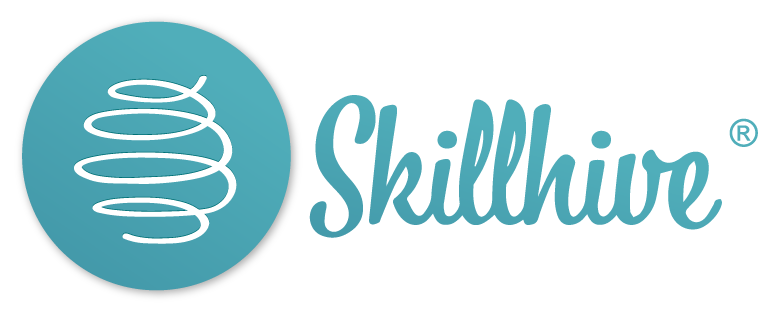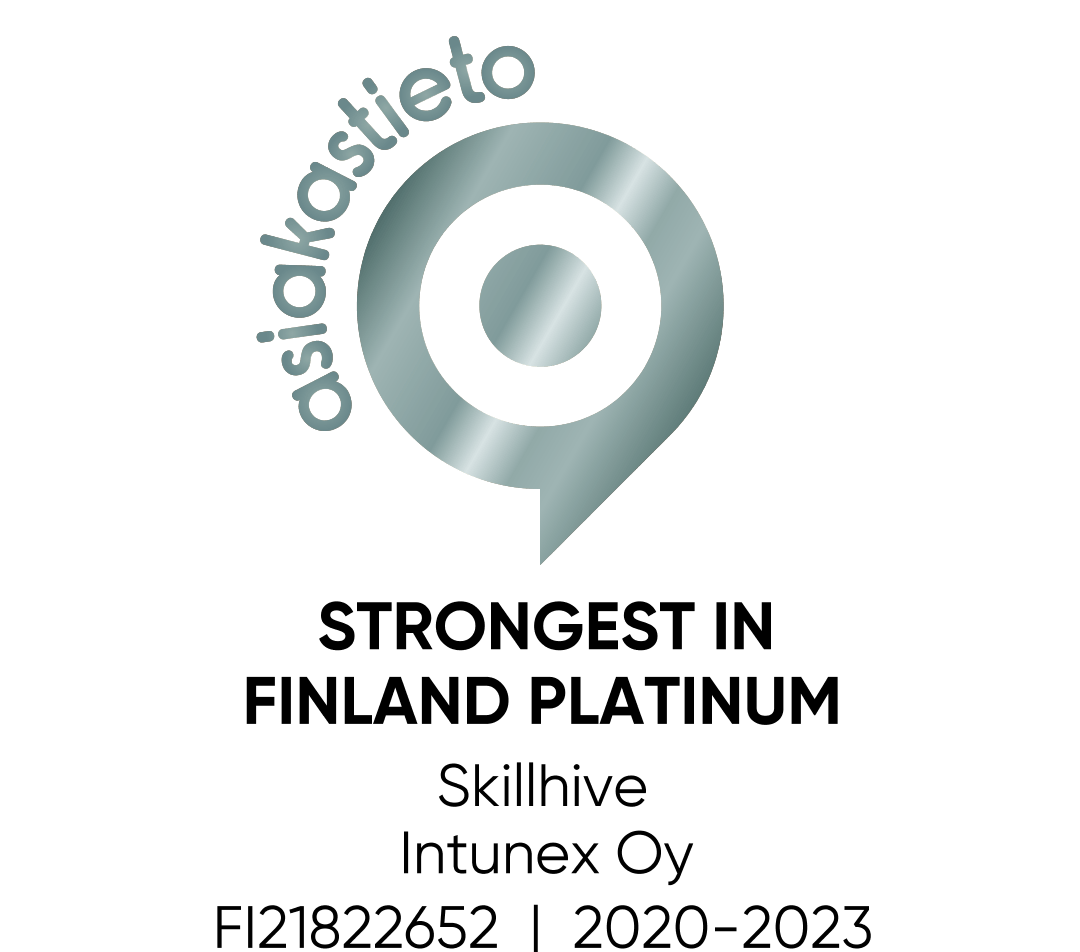Skill swarms – a new way to share expertise and work smarter together
The challenge of sharing knowledge
Ability to find, share and connect with the right expertise quickly across teams is a big challenge especially for large organizations that are looking for becoming more agile and responsive to a constantly changing world.
Many organizations have expended incredible efforts in attempting to promote the sharing of expertise with different human resource (HR) and knowledge management (KM) systems but with only little success.
Traditional KM-systems are built on an assumption that knowledge could be removed from individuals and placed into a some sort of information-base. However, like Harold Jarche states it, complex and creative work require more tacit knowledge which is best shared through conversation and social relationships rather than than guidelines and best practice databases.
HR-systems have been unable to meet this challenge simple because they are too admistrative. Like most enterprise software they are designed mainly for administrative purposes and not for the employees. They follow rigid processes and hierarchical structures that are not flexible enough for today’s complex and fast-paced work environment.
While social technologies like Yammer are breaking down the information silos, social networking is based heavily on serendipity (“fortunate happenstance” or “pleasant surprise“). Activity streams are filled with unrelevant information and producing unnecessary information overload to all. Finding the right people effectively and getting them to participate requires strong social connections that take a lot of time and effort to build.
Based on our experience this is one of the biggest reason why it has been so difficult for enterprises to adapt social media practices. Organizations do not have the time for meaningless chatter and finding the right expertise can not be based on coincidence.
What can bees and ants teach us about sharing of knowledge?
The inspiration behind Skillhive comes from nature; it leverages a phenomenon called swarming which can be seen as a form of collective intelligence. This behaviour enables even large group of individuals to work smarter together.
Wikipedia describes swarming as “emergent behaviour arising from simple rules that are followed by individuals and does not involve any central coordination“. An good example of biological swarming is demonstrated by honey bees. Despite the lack of centralized decision making bees are remarkably successful in identifying the most suitable new nest site and keeping the swarm intact when they leave their nest to form a new bee colony.
It is clear that human behaviour is not the same as the behaviour of insects. Like social business expert Rawn Shah points out, people are not pre-programmed to follow simple rules like bees or ants. However, National Geographic Senior Writer Peter Miller believes we can learn from animals like bees by mimicing their swarming behaviors such as seeking diversity of knowledge (avoiding groupthink) and encouraging friendly competition of ideas.
Maybe the biggest difference between bee and human behaviour is that humans need motivation to work together. This is why skill swarms takes into account not only skills but also interests and motivation of people.
What are skill swarms and how they work?
Skill swarms are self-organizing work groups that form around shared objects based on skills and interests.
With Skillhive anyone can ceate a swarm by sharing an idea, problem, project or any other topic. Skillhive finds people with relevant skills and interest and invites them to join the swarm. Everyone can decide whether to join the swarm or not – based on their skills and interests. The information of employee skills is being constantly updated and gathered from different sources: from people themselves and their co-workers and optionally from Linkedin and other databases.
The sharing of expertise is encouraged through unique social rewarding system. Skillhive automatically recognizes and rewards two kinds of behavior: inspiring and helping. Those who share inspiring ideas and challenges will get inspirer points and those who rush in to help and share their expertise get helper points. Points from the last 30 days are shown in leaderboard to make visible how people are contributing.
Motivation to participate can be both intrinsic or extrinsic and the level of participation can vary in three levels:
- Doers put in the most effort. They have the greatest interests to get the job done.
- Helpers contribute by giving small advices that can still be a great asset for the group.
- Followers may not have time or skills to contribute but they do have interest in the topic. Typically they join the swarm for learning purposes.
Skill swarms enable employees to find and connect with the right expertise more quickly and effectively without stiff command and control structures. This doesn’t mean that hierarchical functions, processes and job descriptions are irrelevant. Instead, swarms adds a new layer of interaction and collaboration on how experts work together.
Swarming and the future of work
According to technolocy analyst Tom Austin and Gartner Research (2010) ‘work swarms‘ will be one of the key changes that will impact how we work and collaborate in the future. They describe swarming as:
“a work style characterized by a flurry of collective activity by anyone and everyone conceivably available and able to add value…. forming quickly, attacking a problem or opportunity and then quickly dissipating. Swarming is an agile response to an observed increase in ad hoc action requirements, as ad hoc activities continue to displace structured, bureaucratic situations”.
Gartner predicted that by 2015, 40 percent or more of an organization’s work will be ‘non-routine’ and people will swarm more often and work solo less. This means that people work with others who they know just barely, if at all. Teams will also include people outside the control of the organization.
Historically teams have consisted of people who have worked together before and who know each other reasonably well, often working in the same organization and for the same manager. With swarms, the strong ties of typical social networks give way to looser ties. Swarms typically encompass a diverse group of professionals and experts who may not have worked together before and probably won’t work as a team again in the future.
Reasearch on working and learning by swarming
Many research findings support Gartner’s predictions.
Helsinki University’s Center for Research on Activity, Development and Learning has studied the historical development of work. The last stage, social or peer production is characterized by project-like teams that originate and form close to the customer surface and are reformed based on changing needs. Typical for these kinds of teams is that their operations and composition are constantly reforming and they lack a unambiguous or central authority.
The research group has developed new concepts like knotworking, mycorrhizae communities, and wildfire activities to illuminate the inter-organizational and radically distributed nature of learning in co-configuration and social production. The head of the research group, prof. Yrjö Engeström (2009) uses also terms such as swarming, learning by swarming andswarm-like patterns to describe these new forms of activity.
There are some similarities or at least common ground with communities of practice and it’s more recent definition byWenger, McDermott and Snyder (2002). However, it seems that swarms goes beyond communities of practises by combining different domains and areas of expertise more flexibly:
“As pointed out by Lave and Wenger (1991) in traditional craft activities, mobility was directed from periphery to the center: novices gradually becoming masters. […] In mass production activities, mobility is directed forward and upward in a linear manner: the assembly line process, the business process and the individual career. […] In social production or peer production the boundaries and structures seem to fade away. Mobility takes the shape of expansive swarming and multidirectional pulsation, with emphasis on sideways transitions and boundary-crossing. […] It is these hybrid and symbiotic forms that promise to open up historically new possibilities.” – Engeström (2009)
Some theoretical background and conceptual framework for learning and working by swarming can also be found from “Trialogical Approach for Knowledge Creation” and “The knowledge-creation metaphor for learning” introduced by Paavola &Hakkarainen (2005 and 2014): Trialogial learning refers to a novel approach on collaborative learning which emphasizes open-ended and challenging work on shared objects to produce new knowledge and new practices.
Janne Ruohisto
References and related articles
- Paavola, S & Hakkarainen, K. 2014. Trialogical Approach for Knowledge Creation. Knowledge Creation in Education.
- Falkvinge, R. 2013. Swarmwise – a tactical guide to changing the world using cost-efficient swarm methodology.
- Gottschalk, M. 2013. What Can Swarms Teach Us About Teams? TalentCulture.
- Gottschalk, M. 2013. Does Your Organization Swarm? Linkedin blog.
- Bernstein, D. 2012. Seven Strategies for Team Swarming To be agile.
- Shah, R. 2012. How and When to Swarm in Social Business. Forbes.
- Baldaia, J. 2012. Building teams and the waggle dance on innovation. Intuinovare.
- Boorman, B. 2012. Swarms: The future of recruiting? The Recruiting Unblog.
- HermanMiller. 2011. Coworking, Swarming, and the Agile Workplace. Research Summary.
- Fenstermaker, S. 2011. Swarm Intelligence: Is the Group Really Smarter? People-triggers.
- Miller, P. 2010. The Smart Swarm. The Penguin Group.
- Gartner, Inc. 2010. Gartner Says the World of Work Will Witness 10 Changes During the Next 10 Years. Press Release.
- Engeström, Y. 2009. Wildfire Activities: New Patterns of Mobility and Learning. University of Helsinki.
- Miller, P. 2007. Swarm Theory. National Geographic.
- Cox, A. 2005. What are communities of practice? Journal of Information Science 31 (6).
- Wenger, McDermott & Snyder. 2002. Cultivating Communities of Practice. Harvard Business School Press.




Share this entry